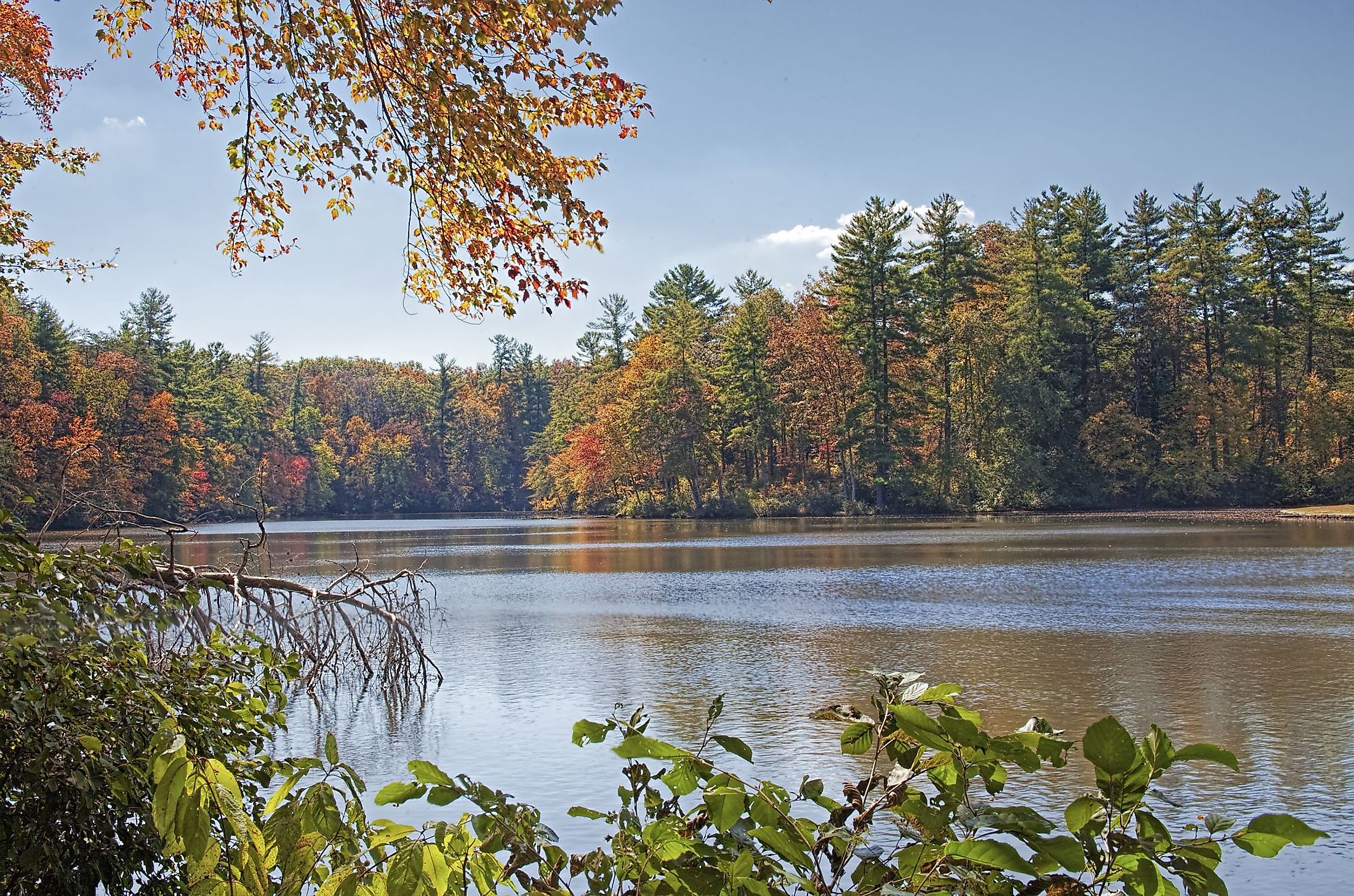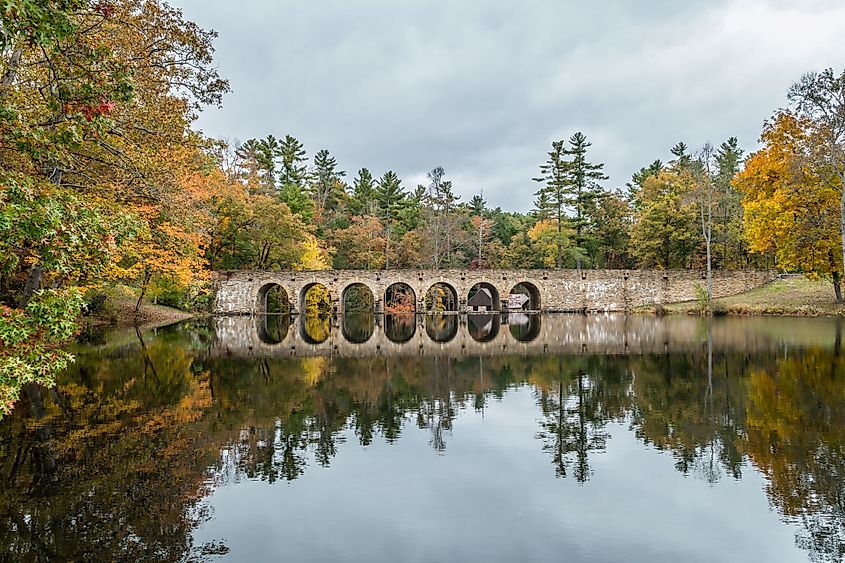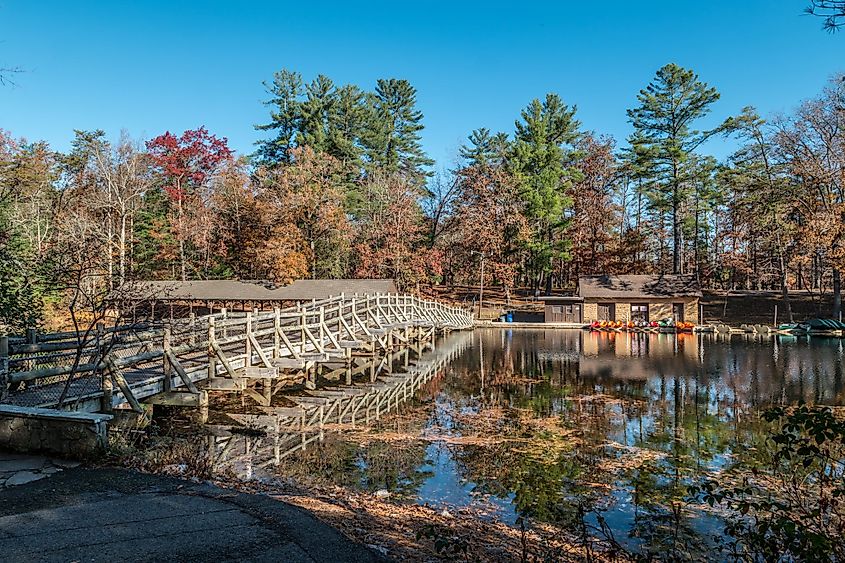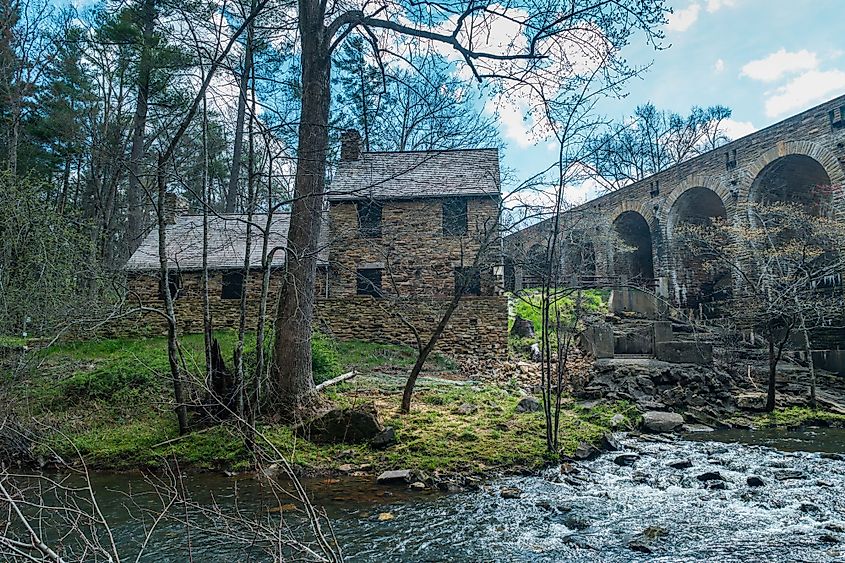
Byrd Lake, Tennessee
Byrd Lake is an artificial body of water that was created in the 1930s due to the impoundment of Byrd Creek, near Crossville, in Cumberland County, in the US State of Tennessee. The Cumberland Mountain State Park that surrounds Byrd Lake, was built as a part of a planned community during the New Deal-era initiative between 1933 and 1939. With a population of primarily small farmers, the region was hard hit by the collapsed markets for produce, on which the area had thrived. The federal government's initiative of a housing project which included a recreational area, eventually led to the formation of the Cumberland Mountain State Park with the newly created lake. Byrd Lake is a popular location for fishing, canoeing, kayaking, and the forests around it for hiking. There is, however, no launch access to the lake for motorized boats.
Geography Of Byrd Lake

Byrd Lake is located close to Crossville, Tennessee, in the Cumberland Mountains. Byrd Lake is situated on the Cumberland Plateau, which rises to a height of more than 1,600 m above the surrounding landscape. The elevation of the Cumberland Plateau in the region of Lake Byrd ranges from 245 m to 915 m. The lake was created by impounding Byrd Creek with a 7-span stone arch bridge that was constructed with native sandstone between 1935 and 1940. The lake is located within, and surrounded by, the forests of Cumberland Mountain State Park.
Geology Of Byrd Lake Area
The Cumberland Plateau, including the Park and lake area, is characterized by a rugged and rocky terrain, covered largely by forests. Several rivers and creeks, including Byrd Creek, find their source in the Cumberland Plateau. The Cumberland Plateau consists of layers of strata that was formed about 300 million years ago. Most of it is sandstone, along with some shale and coal.
Older layers underneath the Plateau incorporate limestone and dolomite. Some of those layers are exposed on the lower slopes, and in the river gorges. Much of the Plateau is covered by forests of mixed evergreen and hardwood trees. At one time, in prehistoric eras, the Cumberland Plateau was covered largely with hardwood forests. In modern times, the soil has thinned, and has become relatively infertile, due to runoff from abundant precipitation throughout the year.
Climate Of Byrd Lake Area
The area around Crossville experiences a humid subtropical climate, as per the Köppen Climate Classification. The summers are warm, and winters are cool, with come cold spells due to the higher elevations of the Plateau. The year's coldest month is January, with average highs of 5.8°C, and lows that dip down to -2.2°C. Snow is fairly common from November through April. In a typical year, there are just under 30 days of snowfall, with total accumulations of 257 mm.
July is the year's warmest month, with average highs of 29°C, and average lows of 18.3°C. Due to high levels of humidity, the average heat index in July is calculated at 35°C. Rain falls over 198.6 days throughout the year, with a somewhat drier season in early autumn. The average annual total rainfall is 1314 mm.
Ecology Of Byrd Lake

Several species of fish make Lake Byrd popular with recreational anglers, including largemouth bass, bluegill, spotted bass, sunfish, crappie, and catfish. Trout are stocked during the winter, with bank fishing allowed in some areas. The lake provides an environment for water birds including kingfishers, herons and both migrating and wintering ducks. The Park is a haven for birdwatchers, with woodpeckers, hawks, the Eastern bluebird, Carolina wren and many other songbirds to be found.
Several species of frogs make their home in the lake's shallower waters, including the American bullfrog, green frog, pickerel frog, northern cricket frog, and others. Toads and several species of salamanders, newts, and snakes, including garter snakes and the Eastern copperhead, can be found in the surrounding woods. The forest around the lake consists of mature hardwoods, along with many shrubs and wild flowers.
Brief History Of Byrd Lake

There is evidence of Native American occupation and use of the region through the Cumberland Mountains since prehistoric times. Prehistoric rock art throughout the Mountains has been dated to over 6,000 years ago. The town of Crossville, Tennessee, began to develop at the intersection of two roads in the 19th century, one that was used by many settlers making journey to the west. Dependent on local farming, particularly fruits, Crossville and the region were devastated by the economic downturn of the Great Depression.
Following WWI, the federal government’s New Deal program, specifically under the Subsistence Homestead Division of the Department of Interior, established a community called Cumberland Homesteads. The Cumberland Homesteads housing project was located south of Crossville. The program was designed to provide homes with land they could farm for 250 families who were moved from their subsistence farms higher up in the mountains. The region where they had previously lived, with Byrd Creek running through it, was repurposed to a recreational area. Cumberland State Park was officially created in 1938 with the acquisition of 1,720 acres, including the portion already used for hiking and other activities. Byrd Creek, which runs through the park, was impounded at that time to create Byrd Lake.











